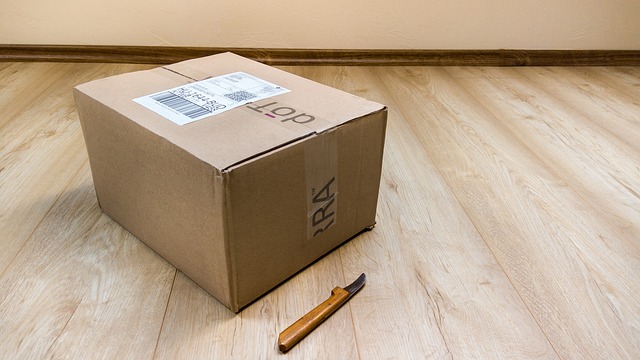By Dean Frew, President of the RFID Solutions Division at SML Group
Whether online or in-store, returns continue to be a pressing challenge for retailers, resulting in high costs and, of course, reduced profitability. According to Statista, approximately 14.5% of retail purchases in the US were returned in 2023, amounting to almost $744 billion. Returned items not only impact supply chains but retailers also struggle to re-sell them at the same price. As per SML’s State of Retail Insight Report 2023, only 47% of returned items are resold at full price, with 42% being sold at reduced price and 12% being not resold at all.
Returns: More Than Financial Damage
Increased costs and reduced profits are common disadvantages of returns. However, this isn’t everything. Excessive returns and complex processes can damage consumer trust and confidence in a brand. As a result, shoppers may feel uncertain about their ability to return items, or, once complete, dissatisfied with the overall return experience. In turn, customers may hesitate to make future purchases due to damaged loyalty. In fact, a Statista survey revealed that more than six out of ten U.S. consumers would be hesitant to shop again at a store after a negative return experience.
In today’s competitive retail environment, shoppers have many options of brands to purchase from. Returns play a vital role in shaping consumers’ perceptions of a brand’s trustworthiness, customer service quality, and overall value proposition. If a retailer’s returns process is complex or less favorable, customers may quickly turn to shop elsewhere. Aside from considering how they can reduce returns, retailers must also figure out how they can make their returns process seamless for their customers.
Streamlining Returns to Enhance Customer Experience
Retailers who can streamline their processes and create hassle-free returns for their customers can boost consumer loyalty and drive cross-selling opportunities. Retailers can use RFID technology to automate and speed up the scanning process, making their returns processes quicker and more seamless. As a result, store associates can quickly process returns using RFID scanners with minimal human interventions, minimizing wait times for customers. What’s more, retailers can integrate their RFID solution with their existing retail technology, such as customer relationship management (CRM) systems. From here, they can provide personalized interactions during the returns process. As a result, retailers can offer instant refunds, exchanges, or store credit, based on individual preferences and purchase history. This can significantly reduce consumer frustration of returns and enhance customer satisfaction.
While RFID can significantly enhance the returns experience of customers by streamlining processes, it also benefits retailers’ operational efficiency. With real-time inventory visibility provided by RFID, brands can track returned merchandise through the reverse supply chain. This allows them to make better decisions related to inventory management and restocking, ensuring the returned products can make their way back on shelves for re-sale as quickly as possible. More importantly, retailers can use RFID tags to authenticate returned merchandise, preventing fraudulent returns, such as counterfeit or stolen items, and ensuring that only genuine products are accepted for return and resale.
Reducing Returns with RFID
Returns have always proven to be a consistent challenge for retailers. While the issue will never completely go away, retailers can minimize returns through technology. The question lies in understanding why items are being returned in the first place. Do returns stem from customer tendencies to purchase multiple items, retain select ones, and return the surplus? Or is it because of fulfillment errors resulting in inaccuracies, shipping delays, and damage, prompting customers to return their purchases? In reality, it could be both. However, retailers can only change factors in their control: their online order fulfillment.
Last year, the total value of online shopping returns was an estimated $248 billion. While 17.6% of online transactions were returned through online platforms, nearly half of all in-store returns stemmed from online purchases. When asked the common reasons for returning online purchases, 80% of shoppers said they did so because the item was damaged or defective. Additionally, 75% of consumers returned because their item didn’t fit, while 56% stated that the item did not match the description. It is evident that damaged items, incorrect size and color, inappropriate product images and delayed deliveries are some of the common reasons leading to returns. Retailers who can optimize their order fulfillment, can effectively fix these elements, ensuring that the correct item is delivered to the right customer at the right time, ultimately minimizing returns.
Retailers need to be considerate about the processes and technologies they are using to streamline their supply chains. Item-level RFID can help retailers automate their processes, allowing them to speed up their operations and increase inventory accuracy while minimizing human error. This process will also help retailers reduce returns that come as a result of mispacked items. With item-level RFID tracking, retailers can trace the movement of each item and identify any instances where items mispacked during the packing or shipping process without any labor. Finally, retailers can also use the real-time data provided by RFID technology to gain insights into return patterns. This can help them optimize their strategies, accurately predict returns trends, and proactively work to reduce their return rates.
Call to Action
Returns in retail will always exist, but it is critical that retailers are able to manage them effectively – both from a consumer and business perspective. In today’s competitive environment, retailers must make their returns hassle-free for their customers to strengthen their position in the market and boost consumer trust. Internally, they must also ensure that any items sent to customers are not damaged, mispacked or lost. RFID can play an important role in helping retailers achieve success in both of these areas, helping brands reduce returns rates while streamlining returns processes.
About the author

Dean Frew, President of the RFID Solutions Division at SML Group and Founder of SML Intelligent Inventory Solutions (formerly Xterprise, purchased by SML in 2013). Mr. Frew is responsible for driving SML’s RFID Tags and Solutions strategy, and runs the RFID solutions division, based on his 20+ years of experience delivering RFID solutions to retailers and brand owners around the global.
Related Articles

Hexnode CEO on how the “Holiday Illusion” is Masking the Risks of Retail’s Seasonal Workforce
The danger of seasonal hires is magnified not just by who is accessing the network, but when they are doing it. Sophisticated threat actors possess a deep understanding of the retail operational calendar.

The New Frugality: How Inflation and Tariffs Are Reshaping Consumer Spending
One of the most telling shifts is how shoppers approach decision-making. Where convenience once dominated, consciousness now plays a larger role. People are researching more before making a purchase, comparing prices across multiple platforms, and questioning whether they really need the product in the first place.

Embracing new concepts vs the return to brick-and-mortar
Balancing the return to physical retail and the development of new technologies to enhance customer experience and drive operational efficiency for long-term success.
Enartis to Acquire Parsec in Winemaking and Retail Deal
The deal will bring Enartis and Parsec together to help wineries manage every part of production more easily and efficiently, from grape to bottle.


 for the latest news and job opportunities in retail tech
for the latest news and job opportunities in retail tech 